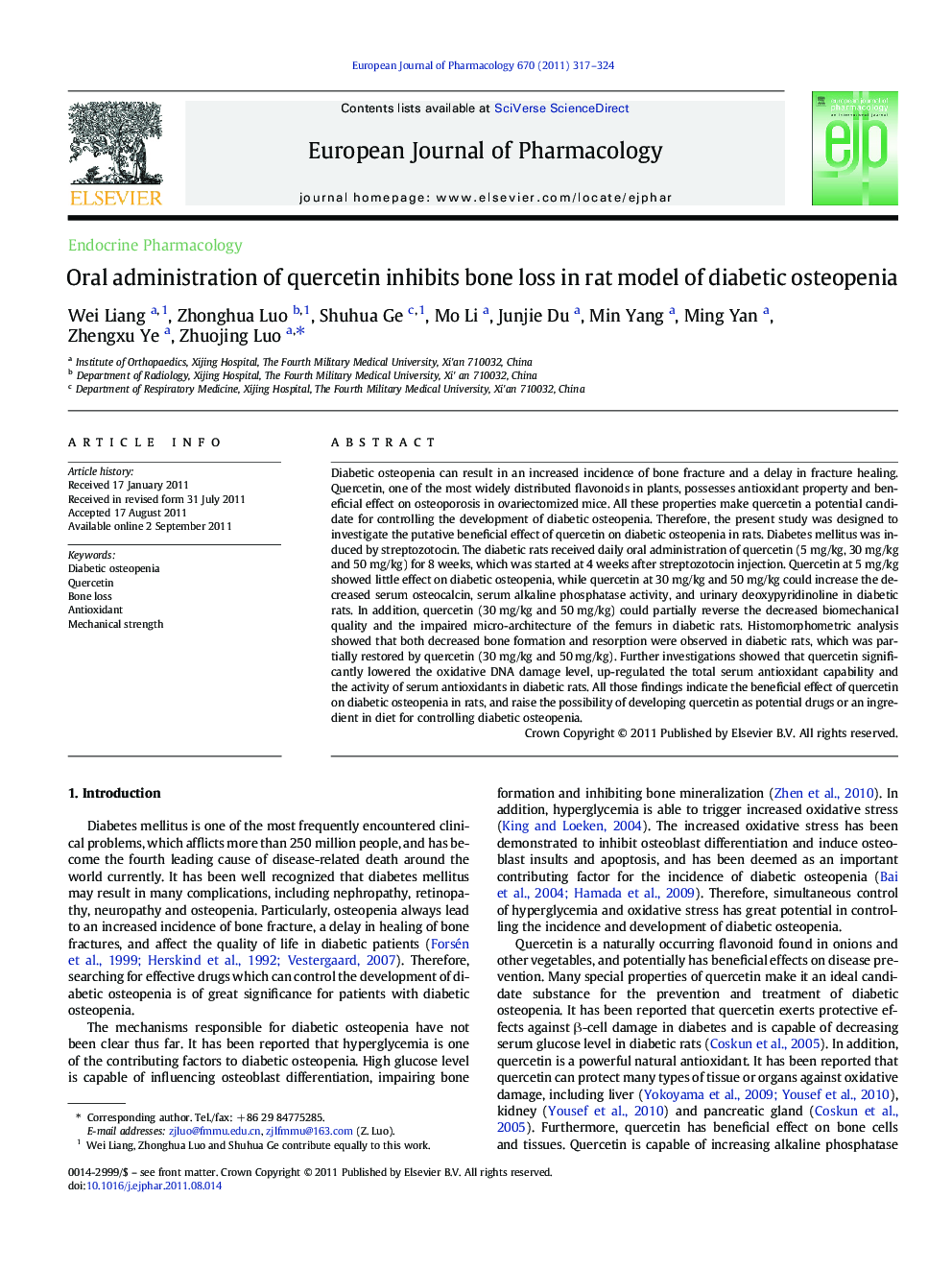| Article ID | Journal | Published Year | Pages | File Type |
|---|---|---|---|---|
| 5830267 | European Journal of Pharmacology | 2011 | 8 Pages |
Diabetic osteopenia can result in an increased incidence of bone fracture and a delay in fracture healing. Quercetin, one of the most widely distributed flavonoids in plants, possesses antioxidant property and beneficial effect on osteoporosis in ovariectomized mice. All these properties make quercetin a potential candidate for controlling the development of diabetic osteopenia. Therefore, the present study was designed to investigate the putative beneficial effect of quercetin on diabetic osteopenia in rats. Diabetes mellitus was induced by streptozotocin. The diabetic rats received daily oral administration of quercetin (5Â mg/kg, 30Â mg/kg and 50Â mg/kg) for 8Â weeks, which was started at 4Â weeks after streptozotocin injection. Quercetin at 5Â mg/kg showed little effect on diabetic osteopenia, while quercetin at 30Â mg/kg and 50Â mg/kg could increase the decreased serum osteocalcin, serum alkaline phosphatase activity, and urinary deoxypyridinoline in diabetic rats. In addition, quercetin (30Â mg/kg and 50Â mg/kg) could partially reverse the decreased biomechanical quality and the impaired micro-architecture of the femurs in diabetic rats. Histomorphometric analysis showed that both decreased bone formation and resorption were observed in diabetic rats, which was partially restored by quercetin (30Â mg/kg and 50Â mg/kg). Further investigations showed that quercetin significantly lowered the oxidative DNA damage level, up-regulated the total serum antioxidant capability and the activity of serum antioxidants in diabetic rats. All those findings indicate the beneficial effect of quercetin on diabetic osteopenia in rats, and raise the possibility of developing quercetin as potential drugs or an ingredient in diet for controlling diabetic osteopenia.
